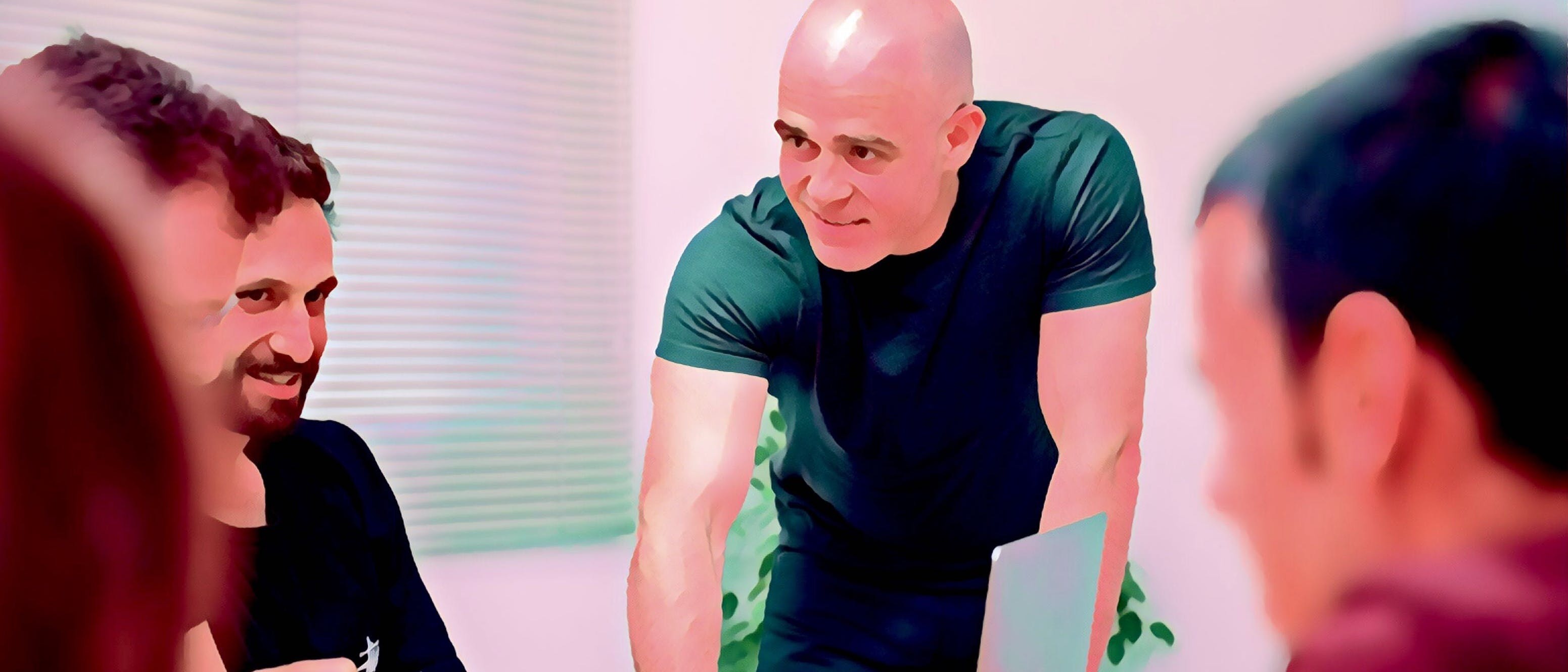Q&A: Lightricks’ Zeev Farbman On Being In the Business of Creativity

Lightricks first built an app that allowed anyone to edit selfies (Facetune). When that took off, they put all their resources into building more creativity-first apps.
As more and more people are isolating in their homes as social distancing becomes the new normal, apps that spark creativity have become a source of consolation. For example, TikTok usage soared this month, seeing an 18 percent increase in downloads week-over-week.
For app developer Lightricks, the company behind Facetune, Pixaloop, Videoleap, Photofox and Quickshot, there’s been a major uptick in usage since more people are stuck at home and looking for things to do (often on their phones). Since mid-Feburary, time spent across the company’s suite of apps has doubled, as has its user numbers.
Lightricks has over 250 million downloads worldwide, with over 350 million images and videos created in its suite of apps and shared by users each month. Earlier this year, Product Hunt caught up with Lightricks co-founder and CEO Zeev Farbman to discuss the first steps that go into building each app, how the company pivoted to a subscription model, and advice on building a brand that promotes creativity.
This interview has been condensed and edited for clarity.
Where did the original inspiration for Lightricks' collection of creativity apps come from?
As visual storytelling continues to evolve, individuals, influencers and brands are more equipped to think and act creatively than ever before. Coming from the academic world, my co-founders and I were already researching different ways the intersection of computer science and visual creativity could transform the ways people created and expressed themselves. We knew what we were seeing in academia did not yet exist in the market, so we built an app that allowed anyone to quickly and easily edit their selfies, hoping that product could help fuel our efforts to develop a collection of powerful creativity apps.
The initial app, Facetune, became quite popular and showed us the hunger people had for photo and video editing products that bridged a gap by being both robust enough for professionals, while also being easily accessible to everyone. Our subsequent collection of creativity apps — Photofox, Videoleap, Pixaloop and Quickshot — were built to do just that, allowing anyone to craft visual content that expresses the world through their eyes.
What was the first step you took in building each app?
We investigated what our target audiences really wanted, and how to create unique value for them. Before starting any build — especially a mobile app where there may be numerous options already out there — you have to explore whether your idea has already been executed, or if existing products could be dramatically improved. From there each product should aim to solve a problem or series of problems.
Our team did everything from researching inspiration, to gauging technical requirements for a superior user experience, to monetization. We realized that by implementing advanced technologies of image processing, computer graphics, and machine learning, we could revolutionize the robustness and experience of mobile photo and video editing for diverse audiences. Having a clear goal for our apps and the target audiences is what helped us get there faster.
What's been the most challenging aspect of sustaining growth at Lightricks?
When we changed our business strategy to a subscription-based model a few years ago, I remember a lot of sleepless nights and pushback as people weren’t accustomed to app subscriptions. But we felt strongly that consumers were willing to subscribe for apps that give them value, and now, the business model is commonplace throughout the industry. Another challenge is to ensure we’re constantly focused on finding the right balance between attracting new users while making sure we’re constantly evolving the products in ways that deliver an amazing experience for long-time users.
What's been the most rewarding aspect of building Lightricks’ collection of apps?
What began as one creative photo editor has grown into a collection of photo and video editing apps that, every day, has millions of people immersing themselves in our products. Recognizing we had an opportunity to provide creative enthusiasts with tools that translate their energy into beautiful and entertaining works of art, without users having to break the bank, is a great feeling. And being able to see the eclectic content users create has probably been the most rewarding aspect of the business.
What's the best advice you can give someone who wants to build a brand that fosters creativity?
Hire the best team possible and enable them to work together in innovative ways that constantly benefit your users. In turn, have a brand purpose that will make your business as successful as possible. Our mission at Lightricks is to democratize creativity and empower self-expression, and we pride ourselves on having some of the best designers, developers, marketers, researchers in the industry, all of whom have helped make Lightricks what it is today.
Comments
Be the first to comment
More stories

Keegan Walden · Makers · 7 min read
The inner work of startup building

Calvin Chen · Makers · 7 min read
Suffering = Growth
Sumanyu Sharma · News · 4 min read
Can LLMs find bugs in large codebases?




